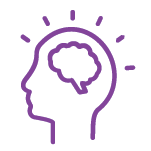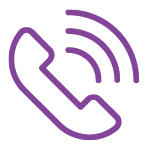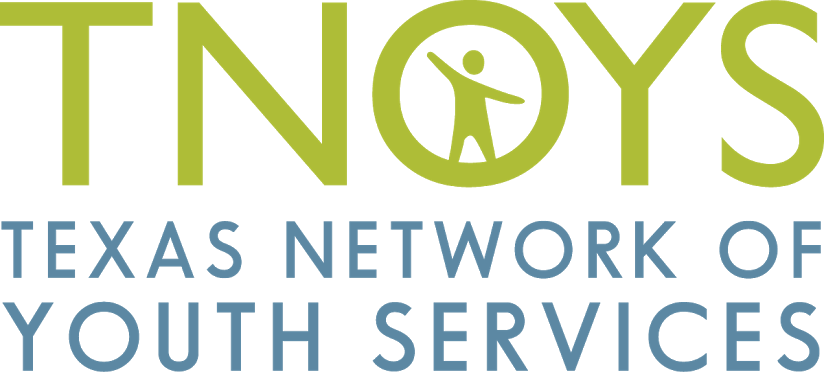TNOYS has compiled a list of quality resources to support our member organizations in preventing, identifying, and responding to Child Sex Trafficking (CST) and Commercial Sexual Exploitation of Youth (CSEY). The purpose of this Resource Center is to provide youth-serving professionals and organizations with information and materials in an easily navigable format to support their efforts in preventing CSEY among their clients and meeting the complex needs of survivors. The resources are categorized according to content. Please note that TNOYS will update the resource center with new content as released.
TNOYS is positioned to provide training on topics such as prevention, risk factors, screening and identification, and the complexity of the unique needs of trafficking survivors, as well as on core competency practices such as motivational interviewing, crisis intervention, strengths-based practice, positive youth development and building alliances with youth, trauma-informed care, and more. If you would like to learn about the training subject matter offered by TNOYS, please email info@tnoys.org to set up a consultation about the needs of your organization.
Please navigate to resources based on the following topics:
Therapeutic Interventions and Approaches
National Organizations & Hotlines
- Report suspected abuse to DFPS:
- By phone: 1-800-252-5400.
- Online via the Texas Abuse Hotline Website.
- To access care coordination for a minor child victim of trafficking, call the National Human Trafficking Hotline at 1-888-373-7888.
- If the situation is an emergency or you believe someone is in immediate danger, call 911.

Understanding CSEY
Human trafficking, which includes both labor and sex trafficking, is a growing criminal enterprise that amounts to a $32 billion industry worldwide. Research shows that at-risk youth (such as those experiencing homelessness) are especially vulnerable to being targeted by traffickers.
The following white papers and studies aim to shed light on the prevalence of CSEY and human trafficking, discuss challenges in serving trafficked children and youth, and offer possible solutions.
Certificates on Human Trafficking
Source: National Network for Youth
National Network for Youth (NN4Y) has teamed up with the McCain Institute for International Leadership to offer two distinct Certificates on Human Trafficking (CHT). These Certificates are designed for direct service providers working at runaway and homeless youth programs. After participating in each course, and successfully completing post-tests on the material presented, participants will earn a certificate indicating that they have successfully completed the training.
- “Foundation on Human Trafficking” is the first in a series of training programs on human trafficking. The six hours of live training covers the following topics: Trafficking Definitions and Relevant Laws, Trafficking Myths & Biases, Identification, Addressing Trafficking Trauma and Its Impacts, Building Relationships with Youth and Case Management, Accessing Additional Resources and Meeting Your Professional Obligations, Responding to Local Variations and Putting Training into Action.
- “Practical Applications: Screening, Response, and Trauma” is the second in the series of training programs on human trafficking. Taking the Foundations on Human Trafficking course is required before enrolling in this course. The six hours of live training covers the following topics: How to screen youth clients for experiences of sex and/or labor trafficking, How to assess the needs of your trafficked youth clients, How to appropriately serve youth who have been trafficked, Understanding the science of trauma and its impact on your clients, and helping staff cope with secondary trauma.
Please note: TNOYS staff and members are certified to administer this training. Please email info@tnoys.org for more information.
Human Trafficking Digital Resources and Factsheets
Source: Family & Youth Services Bureau
According to research conducted by Chapin Hall at the University of Chicago, an estimated 4.2 million young people between the ages of 13-25 experience homelessness each year. Runaway and homeless youth (RHY) are at higher risks of becoming victims of sex and labor trafficking due to their homelessness situation. These youth are perceived as easy targets by traffickers because of their lack of housing, connections, resources, and safety nets.
As part of their Runaway and Homeless Youth Training & Technical Assistance Center, the Family & Youth Services Bureau has published four digital resources and factsheets that address the intersection of Runaway and Homeless Youth (RHY) programs and human trafficking. These resources include important information for any youth-serving organization considering providing services to homeless youth who have been trafficked.
- Human Trafficking for RHY Serving Agencies: A Resource Guide
- Human Trafficking in Youth-Serving Programs
- Labor Trafficking and RHY Programs
- Not Another Statistic
Who Pays the Price? Assessment of Youth Involvement in Prostitution in Seattle
Source: City of Seattle Human Services Department, Domestic Violence and Sexual Assault Prevention Division
The City of Seattle’s Human Services Department’s Domestic Violence and Sexual Assault Prevention Division commissioned this Assessment of Youth in Prostitution. Data were collected through 32 interviews with service providers, law enforcement, and public officials, as well as group interviews, service provider surveys, case file checklists, and key informant interviews with 5 women who were survivors of prostitution. This report presents the findings, and offers recommendations for service models and interventions.
Very Young Girls
Source: NYC GEMS Documentary
Following its release in 2007, this powerful documentary was critically acclaimed by the New York Times and film festivals around the world. “Very Young Girls” is an exposé of human trafficking that follows 13- and 14-year-old American girls as they are seduced, abused, and sold on New York’s streets by pimps, and treated as adult criminals by police. The film follows the barely-adolescent girls in real time, using vérité and intimate interviews with them as they are first lured on to the streets and the dire events that follow.
Training Resources from GEMS
Source: GEMS
Since 1998, GEMS has been providing training for youth-serving professionals and law enforcement. 20 years of training expertise has uniquely positioned GEMS to lead the field in innovative and immersive survivor-created training experiences on the issue of commercial sexual exploitation and domestic trafficking. GEMS created the first national training curriculum on the commercial sexual exploitation and domestic trafficking of children and youth. Like all GEMS curriculums, it was survivor-created. The intensive 3-day “Train the Trainer” curriculum was designed to spread awareness as widely as possible.
Responding to Youth Homelessness: A Key Strategy for Preventing Human Trafficking
Source: National Network for Youth
Research indicates that about 800,000 of the youth and young adults who experience homelessness in a year may also be victims of sex and labor trafficking in communities across the country. This report outlines common themes and pathways of trafficked youth, based on information shared by youth in two studies.The report also explored solutions and policy recommendations for housing and homelessness services agencies, child welfare systems, education systems, and others.
National Strategy to Combat Human Trafficking
Source: U.S. Department of Justice
This report outlines the Justice Department’s national strategy to enhance its work in addressing human trafficking, as part of the Justice for Victims of Trafficking Act. Between 2009 and 2016, the department increased the number of trafficking cases filed by 79 percent, when compared to the previous eight years. The department also increased prosecution of cases involving child sex trafficking. This national strategy sets forth plans to enhance coordination within the department and to develop specific strategies within each federal district to stop human trafficking.
Survivor Insights: The Role of Technology in Domestic Minor Sex Trafficking
Source: THORN
In an effort to strategically inform technology initiatives for combating domestic minor sex trafficking (DMST), Thorn partnered with Dr. Vanessa Bouché at Texas Christian University to survey survivors about their experiences. The survey focused on understanding what role technology plays in a victim’s recruitment into, time while in, and exit from DMST.
Two central themes emerged from survey responses:
- Technology is playing an increasing role in grooming and controlling victims of DMST.
- Less familiar forms of DMST, including those trafficked by family members or without a clear trafficker, emerged in the DMST landscape. However, consistent in all types of DMST observed are common experiences of childhood abuse and neglect.
The Typology of Modern Slavery
Source: Polaris
For the last 15 years, people in the modern anti-trafficking field have struggled to identify and disrupt human trafficking networks in the United States. This movement to stop modern slavery has confronted many challenges, and one of the most significant has been the absence of data that shows how human trafficking operates.
In an attempt to shed light on this issue, Polaris analyzed more than 32,000 cases of human trafficking that were documented between December 2007 and December 2016 through its operation of the National Human Trafficking Hotline and BeFree Textline. This is the largest data set on human trafficking in the United States to ever be compiled and publicly analyzed.
Protected Innocence Challenge Toolkit 2016
Source: Shared Hope International
The Protected Innocence Challenge is based on the Protected Innocence Legislative Framework, which was informed by research performed by Shared Hope International and compiled in “The National Report on Domestic Minor Sex Trafficking.” Recognizing that most of the gaps in responding to domestic minor sex trafficking must be addressed at the state level, the Protected Innocence Legislative Framework sets out the basic policy principles required to create a safer environment for children.
This Toolkit is intended to be used in conjunction with the Protected Innocence Challenge materials available online at www.sharedhope.org/reportcards. Review the Toolkit to learn more.
Human Trafficking Prevalence and Child Welfare Risk Factors Study
Source: The Field Center for Children’s Policy, Practice, & Research
The Field Center recently released a three-city study as part of a larger initiative by Covenant House International to research human trafficking among homeless youth. Encompassing nearly 1,000 young people across 13 cities, the study outlines data on factors that put youth experiencing homelessness at greater risk of human trafficking and commercial sexual exploitation. The study also outlines in-depth findings that were based on interviews with 270 homeless youth.

CSEY in Texas
The state of Texas and its leadership are working aggressively to address this problem, and have implemented a number of strategies such as the creation of the Child Sex Trafficking Team (CSTT) within the Office of the Governor.
The below resources present data on the prevalence of CSEY and human trafficking in Texas, and discuss how communities, stakeholders, and taskforces can work together to protect youth.
Child Sex Trafficking Team
Source: Office of the Texas Governor
The Child Sex Trafficking Team (CSTT) in the Office of the Governor is fighting to end sexual exploitation of children and youth in Texas. Their mission is to build sustainable capacity, enhance expertise, promote policies, and create new and leverage existing collaborations to:
- Protect children from sexual exploitation
- Help the public recognize signs of sexual exploitation
- Help victims recover
- Support healing
- Bring justice to those who exploit children
Please contact your regional administrator for more information on CSEY resources in your region.
- East Texas Regional Administrator: Janet Kasper (Janet.Kasper@gov.texas.gov)
- North Texas Regional Administrator: Tomi Grover (Tomi.Grover@gov.texas.gov)
- Central Texas Regional Administrator: Debbie Solcher (Debbie.Solcher@gov.texas.gov)
- West Texas Regional Administrator: Veronica Lowenberg (veronica.Lowenberg@gov.texas.gov)
Serving Commercially Sexually Exploited Youth in Texas: A Statewide Service Assessment
Source: Texas Network of Youth Services, Texas Center for Child and Family Studies, Texas Alliance of Child and Family Services
In 2019, the Office of the Governor provided funding for the Texas Center for Child and Family Studies (the Center) and the Texas Network of Youth Services (TNOYS) to collaboratively conduct a statewide scan of available service capacity for meeting the comprehensive needs of commercially sexually exploited youth (CSEY). This scan was commissioned in order to gather data that can be used to support capacity building for specialized CSEY services in Texas. Together, the Center and TNOYS created and deployed a survey to community service providers throughout the state likely to be serving CSEY or youth at risk of CSEY. Learn more about the survey and read the full report here.
Roadmap for Texas Communities to Address Child Sex Trafficking
Source: Meadows Mental Health Policy Institute (MMHPI)
Developed in close collaboration between MMHPI and the Office of the Governor’s Child Sex Trafficking Team (CSTT), this resource was created with input from a variety of CST experts and local service providers. Its goal is to provide communities with information, research, emerging practices, models, lessons learned, and resources to end CST.
Human Trafficking by the Numbers
Source: The University of Texas at Austin, School of Social Work
This study is part of a two-year initiative to provide empirically grounded data about the extent of human trafficking across Texas. The study’s impetus is grounded in the scarcity of empirical studies of trafficking, compounded by a “hidden population” that is historically difficult to reach.
It is organized in a way that explains the research team’s learning to date about the prevalence of human trafficking, its financial impact on the economy, and how we understand trafficking in Texas.
”To the Public, Nothing was Wrong with Me”: Life Experiences of Minors and Youth in Texas At Risk for Commercial Sexual Exploitation
Source: The University of Texas at Austin, School of Social Work
This study describes child sex trafficking in three regions across Texas. It is intended to expand the body and depth of knowledge that can help anti-trafficking professionals better identify individuals at risk for, or experiencing, child sex trafficking.
The report explores the life experiences of individuals –both young adults and minors, ages 13-27 years –who are survivors of child sex trafficking in three regions of Texas: Houston, Lubbock, and the Texas-Mexico border region. It also provides data and analysis on the prevalence of trafficking and exploitation within communities at high risk for victimization, and examines specific experiences of minor and youth sex trafficking survivors. This includes risk factors, push/pull factors, help-seeking behaviors, and reasons for multiple exits and re-entries into trafficking and/or exploitative situations.
DFPS HT Data Report FY2019
Source: Texas Department of Family and Protective Services
This report documents the total number of missing children and youth in DFPS conservatorship in FY 2019 and relevant demographic data. Please click here to view the FY 2018 report data.
Introduction to Human Trafficking: A Guide for Texas Education Professionals
Source: Texas Human Trafficking Prevention Task Force
In 2013, the Texas Legislature made human trafficking training for educators and other school-based personnel a priority for Texas. This manual, prepared especially for education professionals, affirms the important role school personnel play in Texas’ statewide, cross-disciplinary anti-trafficking efforts. Specifically, this manual is designed to help education professionals recognize the signs of trafficking, and take the proper steps when reporting the crime.
Texas Human Trafficking Prevention Task Force Report 2018
Source: Texas Office of the Attorney General
This report from the Office of the Attorney General provides an overview of the Texas Human Trafficking Prevention Task Force. The report covers Task Force deliverables, OAG’s Be the One initiative, and a report on task force collaborative efforts with organizations, agencies, and departments such as Children’s Advocacy Centers of Texas, Department of State Health Services, and Refugee Services of Texas.
Preventing Adverse Childhood Experiences (ACEs): Leveraging the Best Available Evidence
Source: National Center for Injury Prevention and Control, Division of Violence Prevention
This resource intends to help states and communities leverage the best available evidence to prevent Adverse Childhood Experiences (ACEs), and lessen harms when ACEs do occur. ACEs are defined as potentially traumatic events that occur in childhood (0-17 years) such as experiencing violence, abuse, or neglect; witnessing violence in the home; and having a family member attempt or die by suicide. Also included are aspects of the child’s environment that can undermine their sense of safety, stability, and bonding such as growing up in a household with substance misuse, mental health problems, or instability due to parental separation or incarceration of a parent, sibling or other member of the household.
This resource features six strategies drawn from the CDC Technical Packages to Prevent Violence. It also covers sector involvement and monitoring and evaluation best practices.
Grading Criminal Record Relief Laws
Source: Polaris
Human trafficking victims often participate in illegal activities against their will, a situation that leads many trafficking victims to being arrested and charged with a crime. Sadly, a survey found that 91% of survivor respondents had a criminal record as a result of being trafficked. A criminal record, even an arrest without a conviction, makes it harder for survivors to find a job, rent an apartment, and otherwise rebuild a life after breaking free from a trafficking situation.
This report analyzes existing state criminal record relief laws for survivors of human trafficking. It also includes state “report cards” that grade criminal record relief laws for survivors of human trafficking in each state, and highlights proposed legislation for select states.

Prevention
To prevent CSEY, we must equip youth with the knowledge and tools to protect themselves from being victimized through trafficking and exploitation.
The resources below are designed to help organizations facilitate training, and guide youth through problem solving, critical thinking, safety planning and skill development to reduce the risk of future exploitation.
Not A #Number: A Child Trafficking and Exploitation Prevention Curriculum from Love146
Source: Love146
Not a #Number is an interactive, five-module prevention curriculum designed to teach youth how to protect themselves from human trafficking and exploitation through information, critical thinking, and skill development. Not a #Number uses a holistic approach focusing on respect, empathy, individual strengths, and the relationship between personal and societal pressures that create or increase vulnerabilities.
The following training resources are offered through Not A #Number:
- Three Hour Professional Training
Not a Number Facilitator Certification: The Not a #Number Facilitator Certification Training is a three-day training designed to equip staff to facilitate Not a #Number and collect the appropriate evaluative data. It includes training and case studies on HT/CSE, modeling of Not a #Number modules, Not a #Number participant teach-back, and training on monitoring and evaluation tools. Schools, child welfare and juvenile justice agencies, and other youth-serving organizations are eligible for licensing, and Individuals employed by the license holder are eligible to be certified as a facilitator. Learn more at https://love146.org/notanumber/licensing/.
Please note: TNOYS has certified facilitators, including a youth-adult team, and we are available to provide this training.
Traps
Source: Traffick911
Traps is Traffick911’s evidence-informed, interactive youth program designed to equip youth (ages 12-18) to avoid the tricks, traps and lures of human traffickers, utilizing survivor stories and age-appropriate video. The information provided is current, relevant, and captures the attention of the youth while opening their eyes to a dark and dangerous part of society. Youth learn practical ways to stay safe, such as alternatives to running away and appropriate internet and real world behaviors. It also empowers youth to be a voice for someone who may be trafficked by teaching them to recognize the red flags of a trafficking victim.
Closing The Gap: A Caregiver Approach to Reducing the Risk of Human Trafficking
Source: Traffick911
Closing the Gap is an extended training designed to teach caregivers and the providers working with them how to protect children from child trafficking and exploitation. Closing the Gap provides caregivers with the opportunity to practice the skills of stress identification, understand how to translate behavior, recognize opportunities for enhancing communication, and more.
Effective Counter Trafficking Programs
Source: Texas Christian University Department of Political Science
This report utilizes a multi-method approach to examine 1) the effectiveness of state-level human trafficking legislation to determine what specific legislative provisions are most effective for obtaining desired outcomes, 2) the characteristics of state prosecutions for human trafficking offenses to determine how state laws are being used to hold offenders accountable, and 3) what the public knows about human trafficking, why the public holds the beliefs that they do, and what the public expects from government anti-trafficking efforts. The goal of these methods is to inform efforts to develop effective counter-trafficking programs and practices for legislators, law enforcement, the courts, anti-trafficking agencies, and the public.
Darkness to Light CSEC Training
Source: Darkness to Light
Darkness to Light’s CSEC Training builds upon the education provided in Stewards of Children. In this evidence-informed training on preventing, recognizing, and reacting responsibly to child sexual abuse, participants learn about the root cause of commercial sexual exploitation, and why preventing sexual abuse is important to reducing the risk of children being sexually exploited. It is highly recommended that participants complete Stewards of Children prior to taking the course.

Screening Tools
To help protect CSEY victims, it is critical to detect the signs of exploitation as early as possible. Commercially sexually exploited youth come into contact with multiple child-serving systems prior to proper identification, and each of these systems is in a unique position to identify and protect exploited youth. Each system interaction is an opportunity to provide critical services to youth victims.
The following tools have been designed to help organizations identify signs of exploitation and assess the risk of future exploitation and victimization.
CSE-IT
Source: West Coast Children’s Clinic
In 2014, West Coast Children’s Clinic developed the Commercial Sexual Exploitation – Identification Tool (CSE-IT) with the input of over 100 survivors and service providers. Since then, the tool has been used by 77 agencies in 3 states and has helped identify 1,500 youth with clear indicators of exploitation.
Currently, CSE-IT is the screening tool recommended by the Governor’s Office Child Sex Trafficking Team (CSTT), and it is being implemented by youth service agencies across the state. Please read more about the Child Sex Trafficking Team’s recommendation here.
The CSE-IT is currently being utilized by the state child welfare and juvenile justice agencies as part of a cross-system approach to identify victims, determine client risk of future exploitation, and inform intervention and prevention strategies.
Quick Youth Indicators of Trafficking (QYIT)
Source: Covenant House
Quick Youth Indicators for Trafficking Youth (QYITY) is the first highly sensitive, comprehensive trafficking screening tool that is truly brief and does not require a trafficking expert to administer.
Use of QYIT at appropriate agencies will enable social service providers to systematically detect and serve homeless young adults who have labor and/or sex trafficking experiences.
Lighthouse Screening
Source: Allies Against Slavery
Lighthouse’s questions and observations are based on real experience and feedback from leaders in the field, to elicit trust and response from the person being screened. The voice and the tone of the screener fit naturally with other intake processes without traumatizing or intimidating the respondent.

Therapeutic Interventions and Approaches
These evidence-based methodologies or promising-practice methodologies range from therapy to other interventions and trauma-informed empowerment programs to meet the complex needs of CSEY survivors.
Evidence-Based Mental Health Treatment
Source: U.S. Department of Health and Human Services
Although a number of studies have identified the serious and often complex mental health needs of victims of human trafficking, there has been limited research about the impact of various mental health therapeutic treatments. As a result, there is a gap in understanding which therapeutic methods work best when treating victims of human trafficking. To begin addressing some of the questions regarding mental health treatment, this issue brief examines the evidence-based research for treating common mental health conditions experienced by victims of human trafficking.
Trauma-Focused Cognitive Behavioral Therapy (CBT)
Source: Child Welfare Information Gateway
Trauma-Focused Cognitive Behavioral Therapy (TF-CBT) treats children and adolescents by targeting the negative behavioral and emotional responses related to the client’s trauma. The therapist provides the supportive environment needed to appropriately confront the beliefs and assumptions that clients often attach to their traumatic experiences. This treatment model generally lasts for 12-18 sessions of between 50-90 minutes. After treatment, the family system should be strong enough to support the client through other treatment options if needed. Adaptations have been formulated to address cultural and socioeconomic traits of clients and their families.
Trust-Based Relational Intervention
Source: Texas Christian University
TBRI is an attachment-based, trauma-informed intervention that is designed to meet the complex needs of vulnerable children. TBRI uses Empowering Principles to address physical needs, Connecting Principles for attachment needs, and Correcting Principles to disarm fear-based behaviors. While the intervention is based on years of attachment, sensory processing, and neuroscience research, the heartbeat of TBRI is connection.
TBRI is designed for children from “hard places” such as abuse, neglect, and/or trauma, and is often used by organizations that serve victims of CSEY. While the TBRI model is not specific to CSEY youth, it has been used successfully with this population. Additionally, TCU has developed a specialized TBRI training for service organizations that work with CSEY survivors.
Motivational Interviewing Training
Source: Motivational Interviewing Network of Trainers
MI is an evidence-based, internationally recognized counseling approach. Many MI strategies are especially effective for CSEY victims, and are being used by organizations that support them.
A significant challenge for CSEY responders is the ambivalence of victims/survivors about acting for their own wellness – staying in a safe location, making the most of treatment and restoration services or supporting investigative activities. MI helps guide individuals from ambivalence towards decision and active change through collaborative conversations.
In Texas, the Office of the Governor’s Child Sex Trafficking Team has been exploring how Motivational Interviewing can help faciliate change for survivors. The OOG and Baylor University Continuing Education are piloting customized Motivational Interviewing (MI) trainings for responders working with commercially sexually exploited youth (CSEY).
This page from the Motivational Interviewing Network of Trainers provides and overview of training events, MI training resources, and information on becoming a MINT trainer.
ARC Framework
Source: ARC Framework
The Attachment, Regulation and Competency (ARC) Framework is a flexible, components-based intervention developed for children and adolescents who have experienced complex trauma, along with their caregiving systems. ARC’s foundation is built upon four key areas of study: normative childhood development, traumatic stress, attachment, and risk and resilience. Drawing from these areas, ARC identifies important childhood skills and competencies which are routinely shown to be negatively affected by traumatic stress and by attachment disruptions, and which – when addressed – predict resilient outcome.
Learn more about The ARC domains and targets and discover training resources at arcframework.org.
The Sanctuary Model
Source: Dr. Sandra L. Bloom
The Sanctuary Model represents a theory-based, trauma-informed, trauma-responsive, evidence-supported, whole culture approach that has a clear and structured methodology for creating or changing an organizational culture. It is a set of interactive tools to change people’s minds and the way we go about working together, thinking together, acting together, and living together. This methodology has been developed and honed over the course of the last thirty-plus years and is grounded in several hundred years of accumulated wisdom.
ETG Commercial Sexual Exploitation Intervention Curriculum
Source: Ending The Game
Ending The Game© (ETG) is a first-of-its-kind “coercion resiliency” curriculum that reduces feelings of attachment to traffickers and/or a lifestyle characterized by commercial sexual exploitation, thereby reducing the rate of recidivism among sex trafficking survivors. Ending The Game is designed to educate and empower survivors of commercial sexual exploitation and trafficking by providing a structure and framework to uncover harmful psychological coercion (a.k.a. “The Game”) that victims may have been subjected to during or before their exploitation experience. By revealing a sequence of commonly-used, yet seldom-explained, mind control techniques used by traffickers, sexual abusers, media and other coercive agents, this curriculum aims to empower victims to acquire skills and end “The Game.”
Evidence Based Mental Health Treatment
Source: U.S. Department of Health and Human Services
Although a number of studies have identified the serious and often complex mental health needs of victims of human trafficking, there has been limited research about the impact of various mental health therapeutic treatments. As a result, there is a gap in understanding which therapeutic methods work best when treating victims of human trafficking. To begin addressing some of the questions regarding mental health treatment, this issue brief examines the evidence-based research for treating common mental health conditions experienced by victims of human trafficking.
Mental Health Issues in Survivors of Sex Trafficking
Source: U.S. Department of Health and Human Services
Research suggests that many survivors of sex trafficking (i.e. those evaluated in shelters), suffer from a mental illness such as depression, anxiety, post-traumatic stress disorder, or Disorders of Extreme Stress (DESNOS). In addition to these diagnoses, victims of sex trafficking can have secondary psychological issues such as alcohol and drug abuse. Despite these findings, there are often no prospective clinical trials to guide therapy once a sex trafficked person is rescued. Oftentimes trauma-based cognitive behavioral therapy is used by default, and such approaches may not be effective for those with DESNOS.
This paper examines the implications of sex trafficking on mental health, and the limitations of current knowledge. The paper also explains priorities for future research.
Promising Practices
Source: Polaris and the Sanar Wellness Institute
This report from Polaris and the Sanar Wellness Institute provides an overview of promising therapeutic support that can be used to enhance individual and group intervention for survivors of all forms of human trafficking. Based on the experiences of serving clients in Polaris’s New Jersey office over the past five years, Polaris has found that certain trauma-informed therapeutic supports help survivors gain resiliency. These interventions include therapeutic/restorative yoga, expressive arts therapy, and mindfulness and sensory-based practices.
Trauma-Focused Cognitive Behavioral Therapy: A Primer for Child Welfare Professionals
Source: Children’s Welfare Information Gateway
Trauma-focused cognitive behavioral therapy (TF-CBT) is an evidence-based treatment approach shown to help children, adolescents, and their parents (or other caregivers) overcome trauma-related difficulties, including child maltreatment. TF-CBT helps children address distorted or upsetting beliefs and attributions and learn skills to help them cope with ordinary life stressors. It also helps parents who were not abusive to cope effectively with their own emotional distress and develop skills that support their children. This factsheet is intended to help child welfare professionals build a better understanding of TF-CBT, including which clients should be referred for this approach, how it is implemented, and resources for additional information.
Therapeutic Interventions for CSEY
Source: Children’s Law Center
Therapeutic treatment models should provide the framework for a therapist to formulate a relationship with a client. Regardless of the model chosen, the key factors to focus on are the therapist-client bond, the learning of coping skills, and creating an individualized plan to treat each client’s different level of trauma. When comparing models, it’s important to note that most practitioners and researchers highlight that the model of treatment is secondary to the actual relationship formed with the client.
This informational overview contains a list of the most frequently cited models that treat CSEC and CSEY survivors, as well as best practices when working with CSEC survivors.

Service Delivery
The following resources provide guidance on implementing services for victims of CSEY.
Ranch Hands Rescue is a human and animal sanctuary founded on hope and healing for the long-term recovery of trauma victims, special needs animals, and male survivors of sex trafficking. Services include a counseling center, an animal sanctuary, and the first non-profit safehouse in the country: Bob’s House of Hope.
Founded in 2021, Bob’s House of Hope is a residential program and safe house for young adult male-identifying survivors of sex trafficking. Bob’s House of Hope serves young men ages 18+, and programming includes Ranch Hands Rescue’s innovative Equine and Animal Assisted Counseling intervention.
Guiding Principles for Agencies Serving Survivors of Human Trafficking
Source: The Southeast Regional Human Trafficking Advisory Group
This resource identifies 15 principles based on best practices, which are meant to provide guidance for service providers, community partners, funders, and others who serve survivors of human trafficking. The guide aims to ensure that the efforts of all stakeholders are empowerment-based, with the goal of supporting survivors in regaining control of their lives.
Hands That Heal
Source: Faith Alliance Against Slavery and Trafficking
“Hands that Heal: International Curriculum to Train Caregivers of Trafficking Survivors” provides a comprehensive approach to serving victims of trafficking and educating caregivers so that they may appropriately and effectively provide care and support.
Hands that Heal is being used by secular and faith-based universities, churches and community groups to inspire people to engage in the battle against human trafficking and to train people on how to provide transformational care to survivors of human trafficking.
The Voice & Choice Survivor Empowerment Program
Source: Traffick911
Our Voice & Choice advocates and mentors (including survivor leaders) walk alongside survivors and their families with an experienced trauma-informed lens, empowering them to fully utilize their voice and their choice, while pointing them toward healthy living.
From Theory to Practice: Creating Victim-Centered Systems of Care to Address the Needs of Commercially Sexually Exploited Youth
Source: First Focus
Once thought to be a problem only affecting the international community, there is now a growing awareness that high rates of forced labor and commercial sexual exploitation of children are occurring within our borders. This paper focuses on the commercial sexual exploitation of children (CSEC), and provides a background on the prevalence of the problem. It also explores risk factors, dynamics of trafficking, and challenges in serving trafficked children and youth, It also offers two sets of recommendations: one focusing on changing the framework of how these youth are viewed and creating a victim-centered approach, and one laying out key components for any effective reform on the ground.
CHANCE Program
Source: Citrus Health
The Citrus Helping Adolescents Negatively impacted by Commercial Exploitation (CHANCE) Program is a pilot program. Children in The CHANCE Program receive individualized clinical treatment primarily centered around Trauma-Focused Care, Cognitive Behavioral Treatment and motivational interviewing. Citrus Health Network provides prospective foster parents with required trainings for licensing, and additional trainings for specialized therapeutic foster care for CSEC victims.
Please note: TNOYS staff and members are certified to administer this training. Please email info@tnoys.org for more info.
Youth Thrive
Source: Center for the Study of Social Policy
To bring a deeper understanding of adolescent development and its implications for working with youth, the Center for the Study of Social Policy has developed a comprehensive train-the-trainer curriculum in collaboration with the National Resource Center for Youth Services and the Academy for Competent Youth Work. While this training is not designed specifically for CSEY, it is relevant in that it addresses best practices for serving high-needs youth.
The training is designed to be a 3- to 4-day intensive experience, packed with relevant information and engaging activities. Content is organized around the five Youth Thrive Protective and Promotive factors: knowledge of adolescent development, social connections, cognitive & social/emotional competence, concrete supports in times of need, and resilience.
Kyle Miller DMST Benchmarks
Source: Office of the Governor Child Sex Trafficking Team
In a webinar hosted by the governor’s child sex trafficking team, Kyle Miller, Director of Global Care & Response, discusses organizational goals for Domestic Minor Sex Trafficking programs that are both trauma-informed and survivor-informed. The following programmatic areas are outlined: 1. Relational, 2. Medical/Physical, 3. Psychological, 4. Spiritual, 5. Educational, 6. Transitional. The presentation includes suggestions for organizations to implement both staff and resident activities to assess outcomes in each programmatic area. Quarterly program evaluations are recommended once benchmarks are established.
Lifelong Wellbeing for Survivors of Sex Trafficking: Collaborative Perspectives From Survivors, Researchers, and Service Providers
Sources: Amy Vatne Bintliff, Christine Stark, Lori DiPrete Brown, Araceli Alonso (University of Wisconsin at Madison)
This article summarizes a collaborative effort by researchers, service providers, and women who have experienced exploitation and trafficking for sex, to inform policy and practice related to care for survivors. In an interactive forum entitled STREETS of Hope: Listening to and Supporting Survivors of Human Trafficking, this effort brought together current research program experience from around the world and survivor perspectives. Using the principles of trauma-informed care, this workshop aimed to gain insights from survivors to improve services and provide survivors and all participants with a wellbeing model to help them think and speak with specificity and clarity about their personal growth, wellbeing, and self-care. Overall, the experience of the STREETS of Hope forum supports the idea that iterative, collaborative work with survivors must be employed to inform systems of care, and that a dynamic and multi-dimensional concept of wellbeing can help survivors, researchers, program leaders and policy-makers.
A Supportive Adult May Be the Difference in Homeless Youth Not Being Trafficked
Source: School of Medicine at Mount Sinai
This study is the largest to specifically assess homeless youth’s demographic and social variables for association with trafficking experiences. Homeless youth who are and are not trafficked share similar life experiences, but those with a supportive adult in their life had lower odds of being trafficked. This study concludes that future investigations that build upon this research can contribute to evidence-based prevention efforts. Exploring order of occurrence will help to clarify factors for and protective factors against trafficking among homeless youth.

Service Directory
TNOYS provides this directory as a resource to help identify providers across Texas who offer youth and family services. You can browse listings in the directory according to region or the type of service you are looking for, or click to view the full list.
The list of providers in this directory is not comprehensive but includes organizations that are likely to accept community walk-ins. While some organizations listed are TNOYS members, membership is not a requirement to be included in the directory. If you are a provider with a program that you would like to have added to the directory, please contact us at info@tnoys.org.
Click here to view TNOYS’ Service Directory.

Image credit: Office of the Texas Governor Child Sex Trafficking Team

National Organizations & Hotlines
Polaris Project
Polaris uses data-driven strategies to prevent and disrupt human trafficking, a $150 billion industry that robs 25 million around the world of their freedom.
Almost one year ago, the state of Texas teamed up with the U.S. National Human Trafficking Hotline to ensure the most robust possible response to child sex trafficking in the Lone Star State, and there are now 128 Texas service providers listed in the National Hotline’s Referral Directory. The public Referral Directory is an online resource made up of anti-trafficking organizations and programs that have chosen to make some or all of their information publicly available. The directory is free, and a helpful resource for organizations working the address human trafficking.
Learn more about Polaris Project here and check out this blog post to read more about their impact in Texas.
National Center for Missing and Exploited Children
As the nation’s clearinghouse and comprehensive reporting center for all issues related to the prevention of and recovery from child victimization, NCMEC leads the fight against abduction, abuse, and exploitation. Visit missingkids.com to learn more, or call the 24-hour hotline at 1-800-843-5678.
U.S. Institute Against Human Trafficking
The U.S. Institute Against Human Trafficking is working to end Human Trafficking in the United States through prevention, combating demand, rescuing victims, influencing government policy and providing safe refuge for the restoration of survivors. Learn more at https://usiaht.org.
National Human Trafficking Hotline
The National Human Trafficking Hotline connects victims and survivors of sex and labor trafficking with services and supports to get help and stay safe. The National Hotline also receives tips about potential situations of sex and labor trafficking and facilitates reporting that information to the appropriate authorities in certain cases. Learn more at https://humantraffickinghotline.org, or call the hotline at 1-888-373-78888.
When to use the hotline
Anyone in need of assistance and/or information and resources related to the issue of human trafficking can contact the National Hotline and access our services.
The hotline encourages you to contact them if you are a:
- Victim or survivor of human trafficking,
- Someone who knows a potential victim of trafficking or has information about a potential, trafficking case,
- Friend or family member of a trafficking victim or survivor,
- Social or legal service provider,
- Local, state, or federal law enforcement,
- Human trafficking task force or coalition,
- Practitioner or advocate in human trafficking and related fields,
- Frontline professional (e.g. educators, medical professionals), or a
- Policymaker or government agency.
Additional guidance
The video “Be the One,” developed by the Office of the Attorney General of Texas, can provide more guidance on understanding and identifying human trafficking. Take a look at guidelines to report human trafficking below:
- Pay attention to the people in your community, your surroundings, and report red flag behaviors.
- Don’t wait to call. Make your report timely.
- Don’t approach traffickers yourself.
- If the conduct you observe is an emergency, call 911!
- If it is not an emergency or you need to remain anonymous, call the National Human Trafficking Hotline 1-888-3737-888.
When making a call, be sure to provide “actionable information”. The details such as the following can make all the difference:
- Descriptions of cars: make, model, color, license plate
- Descriptions of people: height, weight, hair color, age, eye color
- Specific times, dates and locations
- Take a picture if you can safely do so.
